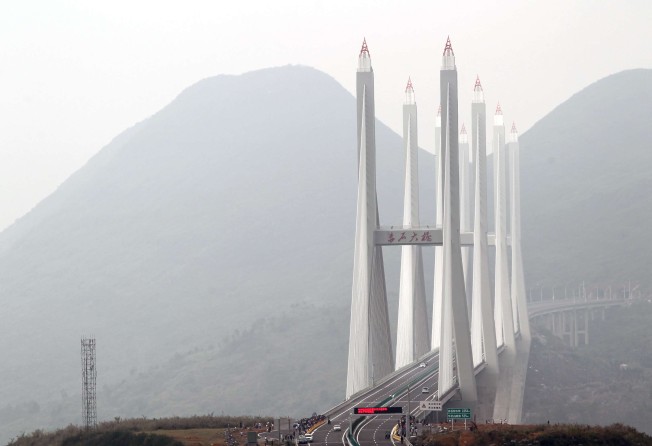
Bonds seen as another financing tool for China’s PPP projects
China launched its first PPP-backed asset-backed securities product last month to finance a sewage and wastewater treatment project worth 840m yuan

Bonds may be an alternative financing tool for China’s public private partnership (PPP) projects compared with the asset-backed securities (ABS) being encouraged by the central government.
China launched its first PPP-backed ABS product last month to finance a sewage and wastewater treatment project worth 840 million yuan (US$121.6). It came two months after Beijing gave the go-ahead for PPP projects to raise funds through securitisation.
PPPs are seen as a means of broadening the financing options available to regional and local governments for infrastructure development, by introducing private investors. An ABS, which may comprise assets such as corporate loans, income receivables or infrastructure charges, has traditionally consisted of a pool of projects.
“ABS should come in when one company has 10 [PPP] projects in operation, and it wants to club them together and refinance in the market for cash flows,” said Vivian Tsang, associate managing director at Moody’s.
“But it’ s very hard to club PPP projects together, as unlike auto loans which are generic, each PPP project is unique in terms of its business and local governments.
“An ABS backed by a club of PPP projects involves different local governments and provinces. These PPP projects will have different credit qualities which have to be evaluated separately. That’s why currently China’s PPP-backed ABSs are backed by a single asset.
“In that case, PPP bonds are another financing option for PPP projects.”
For a single project, a bond can attract long-term funding from private investors, avoiding the need to rely on bank funding that may have a shorter tenor, according to Moody’s.
China’s PPP is still at a nascent stage because of the dominance of state-owned enterprises rather than private sector developers and investors, Ivy Poon, a Moody’s assistant vice president said.
The China Securities Regulatory Commission and National Development and Reform Commission (NDRC) said in December it would allow infrastructure PPP projects which have been operating for at least two years with a stable cash inflow to raise funds by issuing ABS products.

The move is designed to attract more private capital into government-led infrastructure projects as they can refinance sooner.
According to a joint statement, each provincial NDRC office would nominate between one and three PPP projects for ABS by the end of February.
“It will be hard for each province to come up with two to three eligible projects from the existing pipeline. It will take two or three more years to see a pool of eligible assets [for ABS],” Tsang said.
Among a handful of freshly launched PPP-backed ABS products, most are backed by a single environmental protection or water treatment project, due to their smaller size and clear contractual structure.
After two to three years in operation, it is hoped private investors will also have a cleared idea of how the payment patterns between local government and private investors operate, which may give them confidence to join in on projects.
Originally there was little clarity which regulatory body should take the responsibility of drafting PPP laws. In July 2016, the State Council finally assumed that it is responsible to draft the law. This is the big step. I assume with this big promotion to push forward PPP, we are likely to hear more progress in 2017
Legal and contractual frameworks are evolving, to clarify the enforceability of commercial claims against regional local governments, as well as offer a track record of consistent implementation of PPP projects across provinces.
“Originally there was little clarity which regulatory body should take the responsibility of drafting PPP laws. In July 2016, the State Council finally assumed that it is responsible to draft the law,” Poon said.
“This is the big step. I assume with this big promotion to push forward PPP, we are likely to hear more progress in 2017,” she said.
Either securitisation or bond issuance, it is the second phase. Before that, the market needs to have a lot of projects under operational phase, Tsang said.
In just three years, China has PPP 11,260 projects with a total investment of 13.5 trillion yuan at various development stages at the end of 2016, comparing to 6,997 projects with total investment of 8.1 trillion yuan at the start of 2016, according to data from China Public Private Partnerships Centre website.
Despite accelerated implementation of the projects, only 17 projects are implemented for over two years, and only a handful of projects reach financial close or are announced annually.